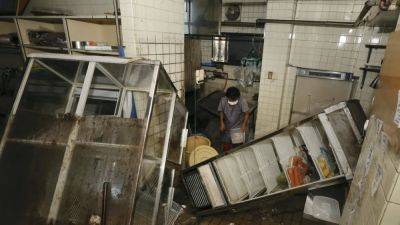AP PHOTOS: 172-year-old Japanese factory preserves traditional way of making cast iron cookware
OSHU, Japan (AP) — Katsunori Suzuki is one of a few craftsmen in Japan still producing cast iron cookware by hand using laborious traditional techniques. The president of the 172-year-old foundry where he works says she wants to keep the tradition alive, even if it costs much more to produce.
Suzuki uses moist sand and a few other ingredients to make the molds using a method called “tegome,” or “hand stuffing.” He spends hours tamping the sand in an iron frame to compress it just the right amount to create the mold, in which he carves detailed designs for the pot.
When the mold is ready, Suzuki fetches buckets of molten iron and hurriedly carries them back to his workspace so the temperature remains at about 1,450 degrees Celsius (2,462 degrees Fahrenheit) when it’s poured into the mold.
After the iron cools and solidifies, the sand mold is broken into pieces with a hammer and the cookware is removed. Any extraneous pieces are cut off.
Suzuki, 59, who has worked in the Oigen cast iron foundry for 40 years, then follows the same process to make a mold for a smaller piece of cookware, such as a lid. Making one pot and a lid takes him an entire day.
In the following days, the cookware, still rough, will be sent to other workers who grind off smaller burrs, polish the surface and bake it at a high temperature to make it rust resistant.
In addition to the strength and dexterity needed to make the molds, the traditional method requires experience to condition the sand with just the right amount of moisture to match the weather conditions.
At the end of the day, Suzuki waters the sand that was used for the mold to begin reconditioning it to make new molds.
Kuniko Oikawa, Oigen’s president, said the traditional tegome method is







